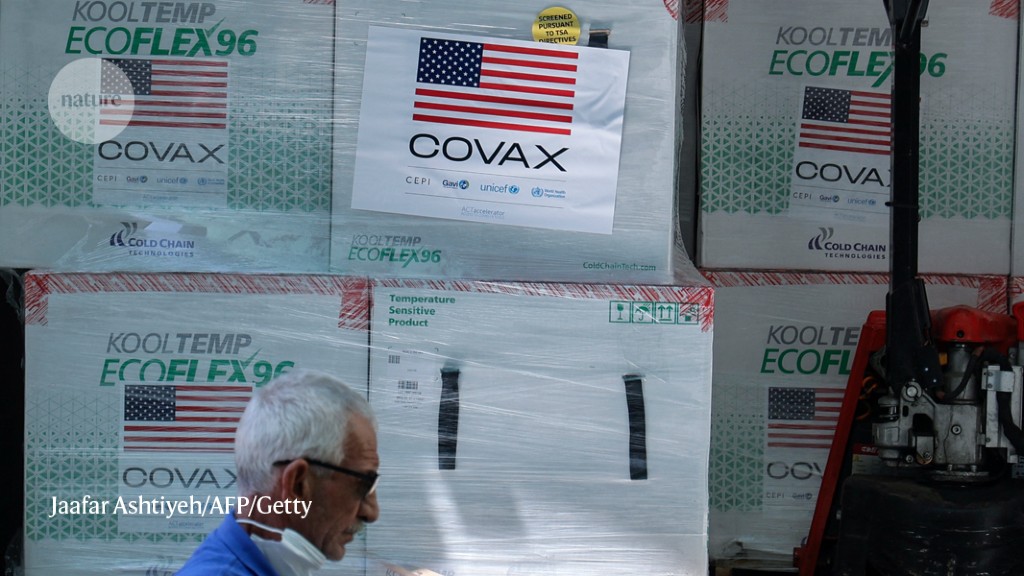Omicron is bad but the global response is worse
[ad_1]
The arrival of Omicron – a recently discovered and highly mutated variant of the coronavirus that appears to be highly transmissible – is creating unease, uncertainty and disruption. The response from world leaders, especially those in high-income countries, is making matters worse.
Travel restrictions are back, although some have questionable effectiveness when virus transmission is high. Countries with large numbers of fully vaccinated people are re-ordering vaccines – but only 6% of people in low-income countries have received a dose. Tulio de Oliveira of the South African Center for Outbreak Response and Innovation in Stellenbosch, who leads the team that alerted the world to Omicron, tweeted that African researchers shared their COVID-19 data. Vaccines and diagnostics will come, but high-income countries will be the first to benefit.
Scientists know this cycle will prolong the pandemic – but world leaders are still failing to choose the quickest route. Rather, the Member States of the European Union are focusing their energies on drafting a new international agreement, or possibly a legally binding treaty. This would create rules to facilitate cooperation between countries during a pandemic, so that the next crisis can be better managed and no country is left behind when it comes to diagnosis and treatment. The project reached a milestone last week: The World Health Assembly, a meeting of health ministers from around the world, officially agreed to start talks.
The World Health Organization (WHO) has expressed strong support for a treaty, agreement or other international instrument that could push leaders to follow the organization’s public health recommendations on sharing data and vaccines. . But in the calendar established at the assembly, this pact would not be adopted until 2024 – and its adoption is not certain.
That’s why more than 100 countries (including China and the United States) and hundreds of organizations, including Nature, support a campaign, led by India and South Africa and backed by the WHO, to temporarily relinquish intellectual property (IP) rights to COVID-19 vaccines and drugs. The design and development of such therapies is concentrated in a relatively small number of companies that hold key patents, as well as the US government. Intellectual property scholars such as Luke McDonagh of the London School of Economics and Political Science say that intellectual property relief during the duration of the pandemic will kickstart vaccine manufacturing around the world. But the EU is resisting, in part because of the strength of opposition from European pharmaceutical companies who fear losing market share if their competitors are allowed to use their designs. But another way is possible.
The COVID-19 Global Vaccine Access Program (COVAX) to deliver vaccines to low-income countries needs a boost. When donor countries, philanthropic foundations and the WHO created COVAX at the start of the pandemic, they had a vision captured in the slogan “no one is safe until everyone is safeâ€. The plan was to immunize the world step by step, starting with the most vulnerable populations.
It never happened. Donor governments have pledged vaccines to COVAX while conducting parallel negotiations with the companies, in some cases ordering far more doses than needed. COVAX was not the priority, and it shows: The program had promised to deliver 2 billion doses by the end of this year, but by July it had delivered only 95 million.
With populations in high-income countries widely vaccinated, COVAX appears to have reached a milestone and will have delivered around 600 million vaccines by the end of the month. But those green shoots could be short lived now that Omicron is pushing high-income countries to re-order large vaccine orders, especially for Omicron-specific vaccines based on messenger RNA. As long as this cycle continues, low- and lower-middle-income countries will always be at the end of the vaccine queue.
David Heymann, longtime WHO scientific adviser, says COVAX needs a leading global figure – someone of the stature of a leader from one of the rich G7 countries – to lead it . Someone with the contacts, clout, star power, and skills to come together to find a comprehensive solution to vaccinate the world, including forcing drug company executives to agree that intellectual property must be shared , as happened with HIV drugs. This is not a critique of COVAX’s current leadership, Heymann stressed, but adjustments are needed.
For a short while this year, researchers were optimistic that the pandemic would end at the end of 2022. But Andrea Taylor, who leads a COVID-19 data team at the Duke Global Health Innovation Center in Durham, North Carolina , says it will be pushed back until 2023 or even 2024, as long as rich countries insist on purchasing most of the available vaccine stock without agreeing to provide more manufacturing capacity, and new variants such as the Omicron continue to appear. “We are taking the least effective route out of the pandemic,†she laments.
It is an inescapable reality and an almost foolproof law: the pandemic will not end as long as vaccine equity is pushed to the margins.
[ad_2]


Comments are closed.